-
Car Reviews
- All reviews
- Midsize SUVs
- Small cars
- Utes
- Small SUVs
- Large SUVs
- Large cars
- Sports SUVs
- Sports cars
- Vans
Latest reviews
- Car News
-
Car Comparisons
Latest comparisons
- Chasing Deals
Visually inspired by the original Volkswagen Kombi and Microbus, the electric ID Buzz has finally arrived in Australia with either five or seven seats, plus a van
There’s always a degree of danger when mining your storied past attempting to achieve an iconic present. And arguably no manufacturer knows that better than Volkswagen.
The 1998 New Beetle became a poster child for the boom – and bust – of the ’90s retro fad, a style-driven car that categorically failed to achieve the usefulness of its air-cooled, rear-engined grandparent, as well as the Mk4 Golf that underpinned it.
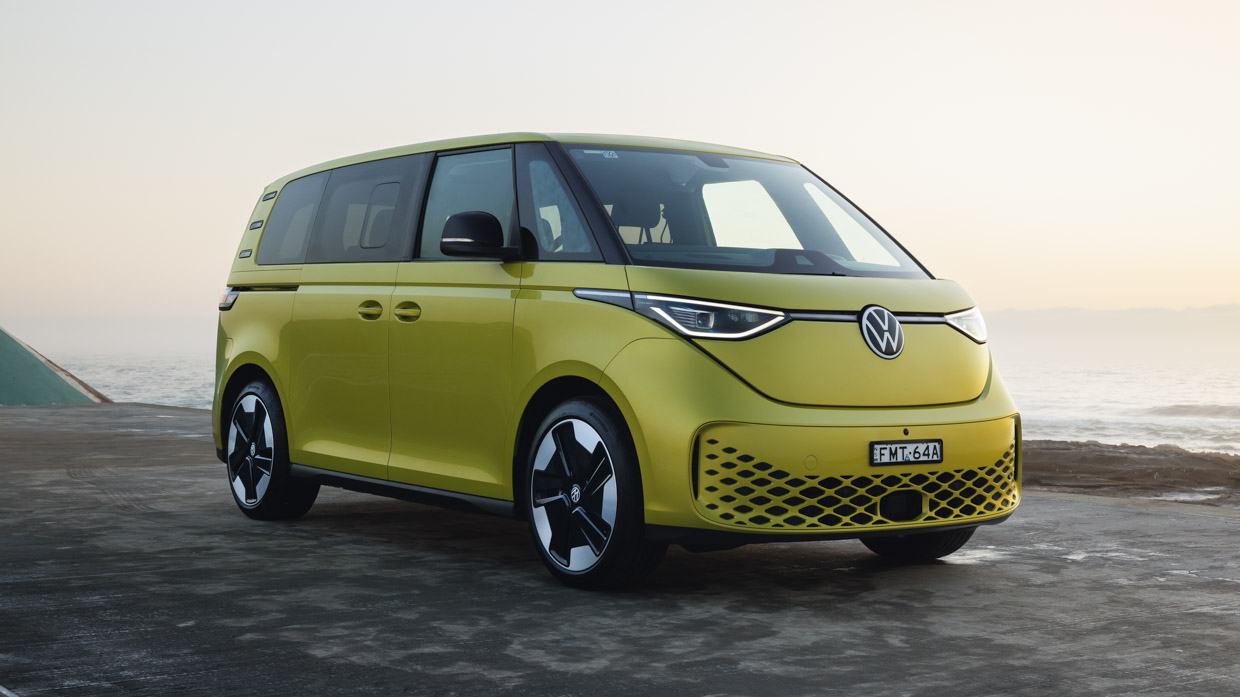
The New Beetle’s saving grace was that it mimicked the old Beetle’s much-loved shape, and that it handled slightly better than a mushy Golf IV.
The ID Buzz is markedly different. Sure, it’s visually inspired by early Kombi/Microbus generations – a theme that originated with VW’s still-stunning Microbus concept in 2001 – but it is a progressively modern, rear-wheel-drive electric car that doesn’t champion form over function.
Available in five- or seven-seat forms, in short- or long-wheelbase, with an AWD GTX flagship variant on the way, there’s also a short-wheelbase, three-seat Cargo version to ensure this VW commercial-of-sorts hasn’t forgotten its roots.
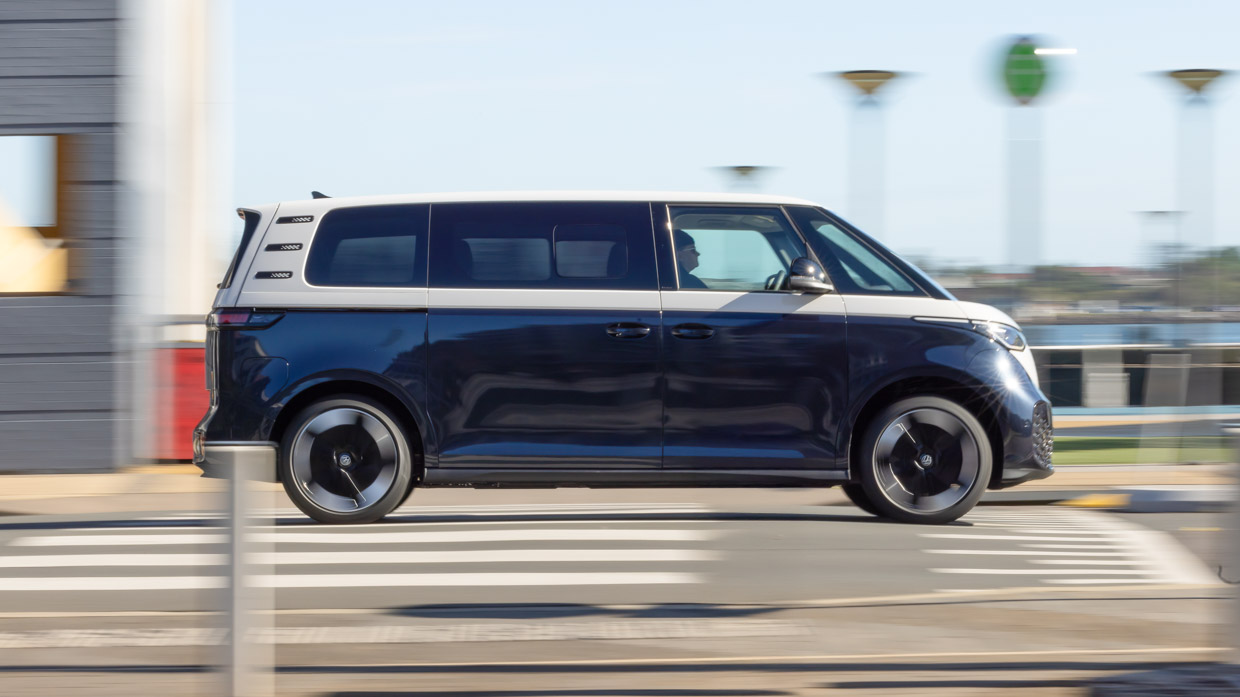
Riding on Volkswagen’s bespoke MEB electric platform, the ID Buzz’s EV credentials are pretty robust. The five-seater rides on a generous 2989mm wheelbase and features a 79kWh (useable) battery while the seven-seater wheelbase stretches to 3239mm and its battery size increases to 86kWh (useable).
The net result is 210kW/560Nm and strong acceleration from both Buzz variants (0-100km/h in 7.6sec for the SWB, 7.9sec for the LWB), as well as competitive charging times (five-80 percent in 30mins) and DC capability (185kW for the SWB, 200kW for the LWB).
As per its Audi EV relatives, Volkswagen’s WLTP range claims err towards conservatism, quoting the least flattering figure based on a car fitted with every option. The result is 452km for the LWB, 422km for the SWB and 431km for the Cargo, though there’s every possibility you may come close to matching, or even exceeding, those distances, based on our launch drive.
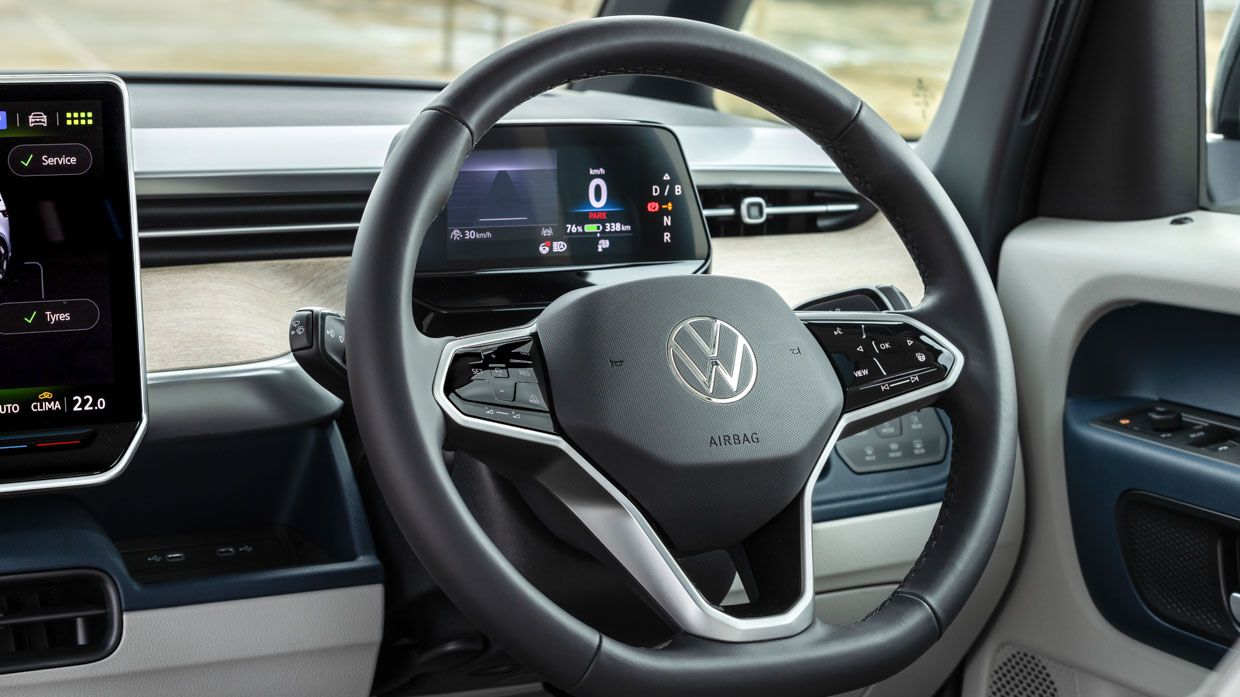
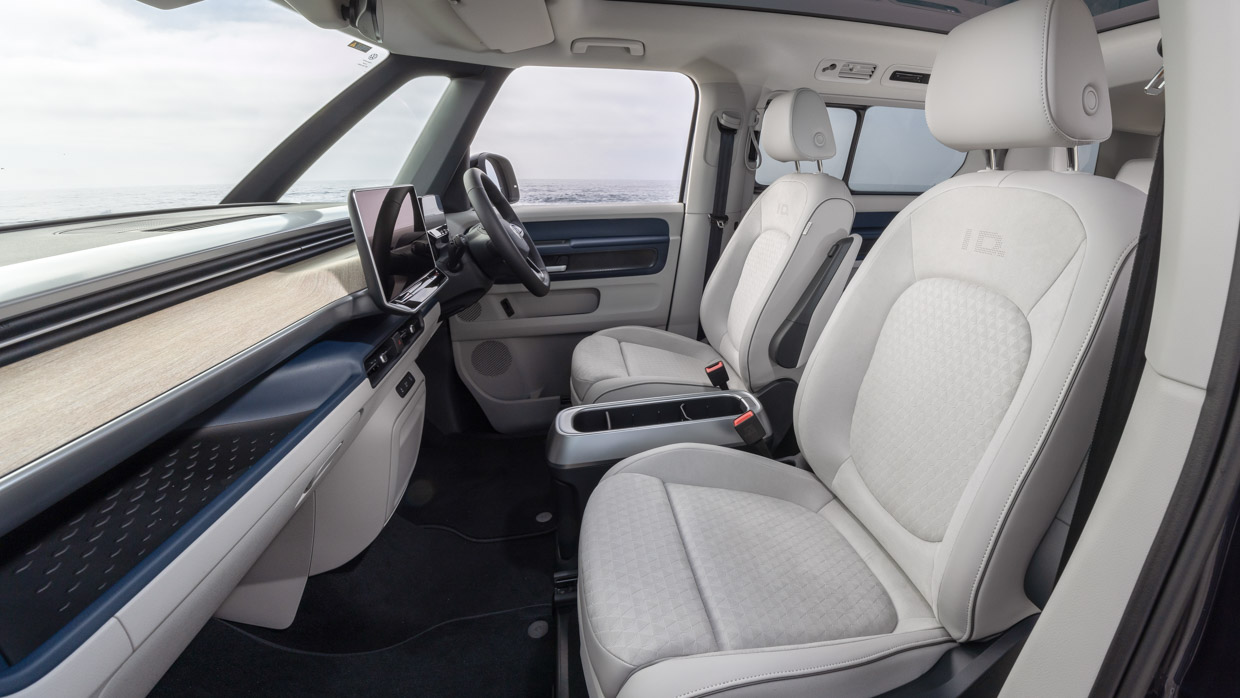
Where the ID Buzz shines brightest is via its characterful exterior design (embellished by a striking range of colours) as well as its interior presentation and packaging.
It has a degree of whimsy, too, with ‘pause’ and ‘play’ symbols on its brake and accelerator pedals, and a lift-out ‘Buzz Box’ Esky-of-sorts between the front seats that contains two plastic bins, as well as an ice scraper and a bottle opener used as dividers in the upper section for drink storage.
In the front row, comfortable buckets with ample adjustment, built-in centre armrests and high-mounted door armrests provide a suitable throne from which to pilot the Buzz, while forward vision is elevated to Cinemascopic levels via its huge bay-windowed windscreen and triangular side glass. You just don’t want to have to reach forward and clean it!
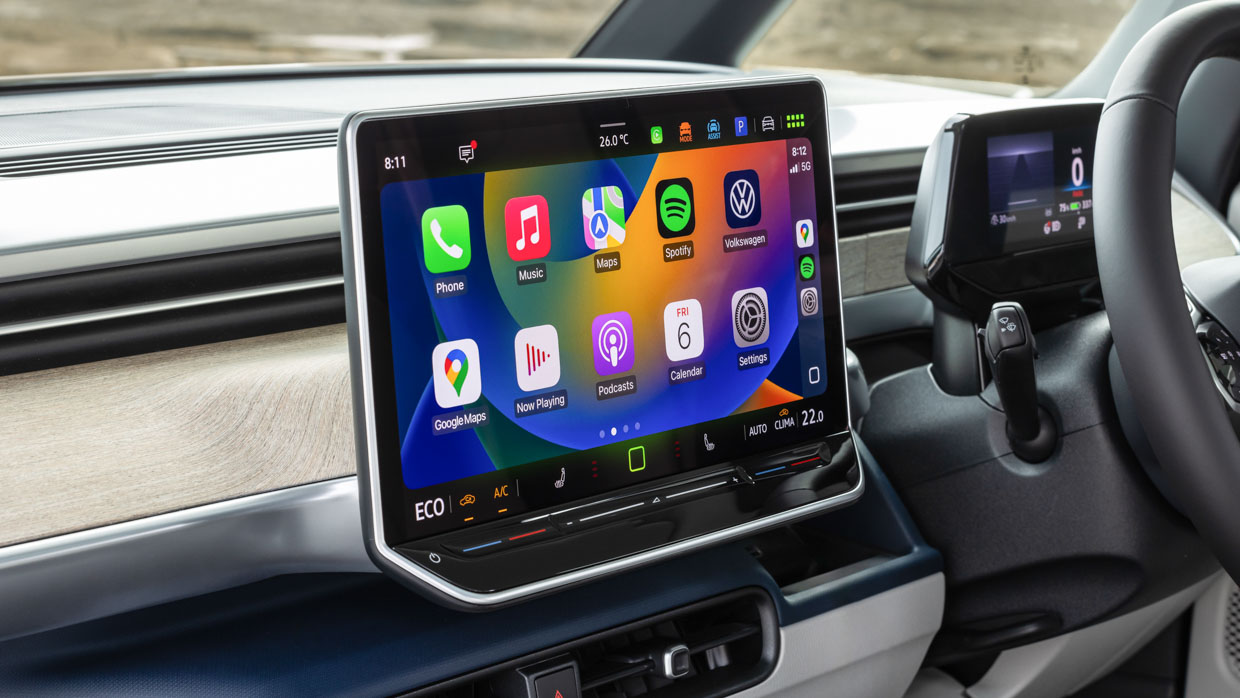
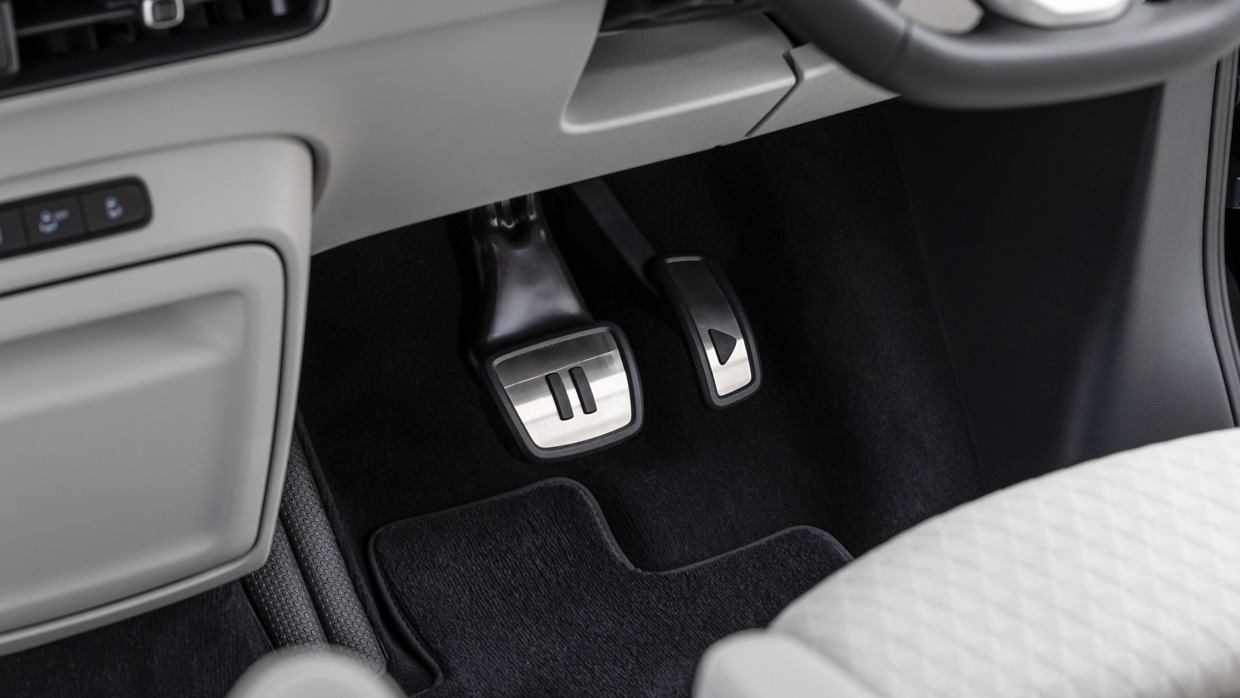
Just like the original Kombi, there’s a flat front floor. But unlike the good old days, the Buzz provides a storage tray right across the upper section of the dash, as well as a flip-down cupholder tray in the centre section and a phone storage slot to the left of the steering column with a pair of USB-C ports, which you’ll need because smartphone mirroring requires a cord.
The doors also offer multi-tiered storage, though the heavily tilted bottle holders in the lower section aren’t ideal, or quite big enough.
Standard seat trim is two-tone grey cloth with heating up front, combined with 10-colour ambient lighting, three-zone climate control, electric auto-latching sliding doors (with embedded electric windows), an electric tailgate, and a 12.9-inch centre dash screen with reasonable nine-speaker audio quality, wireless charging and seven USB ports.
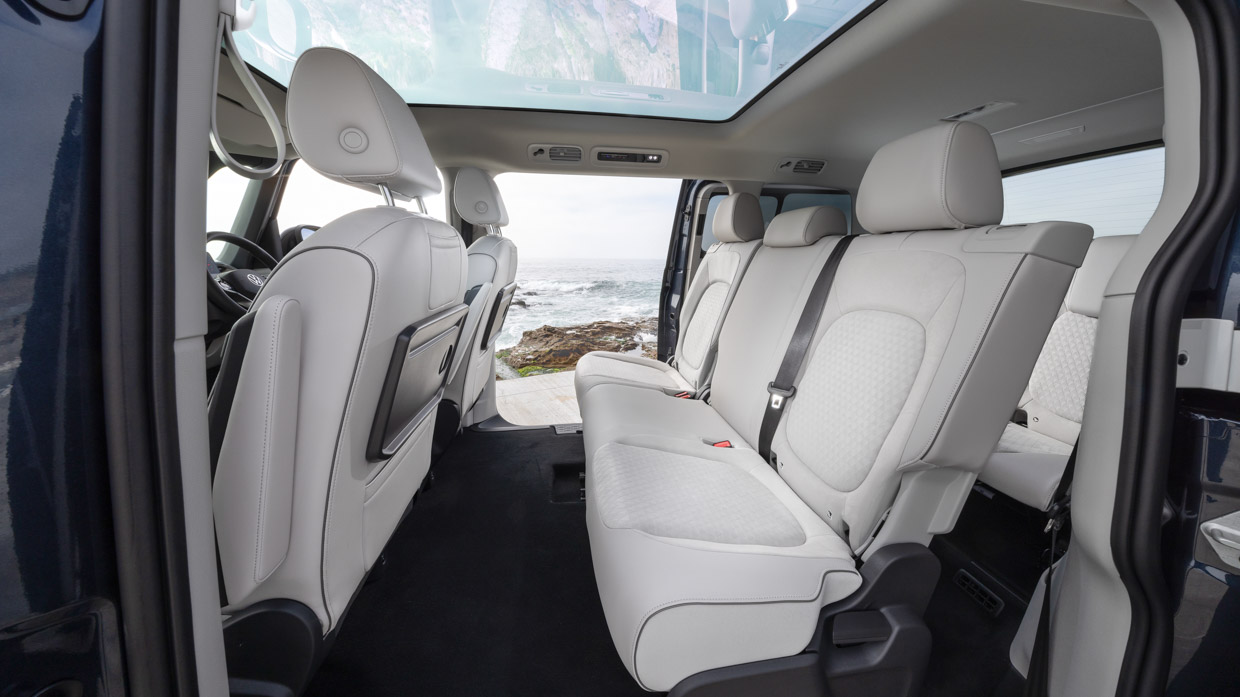
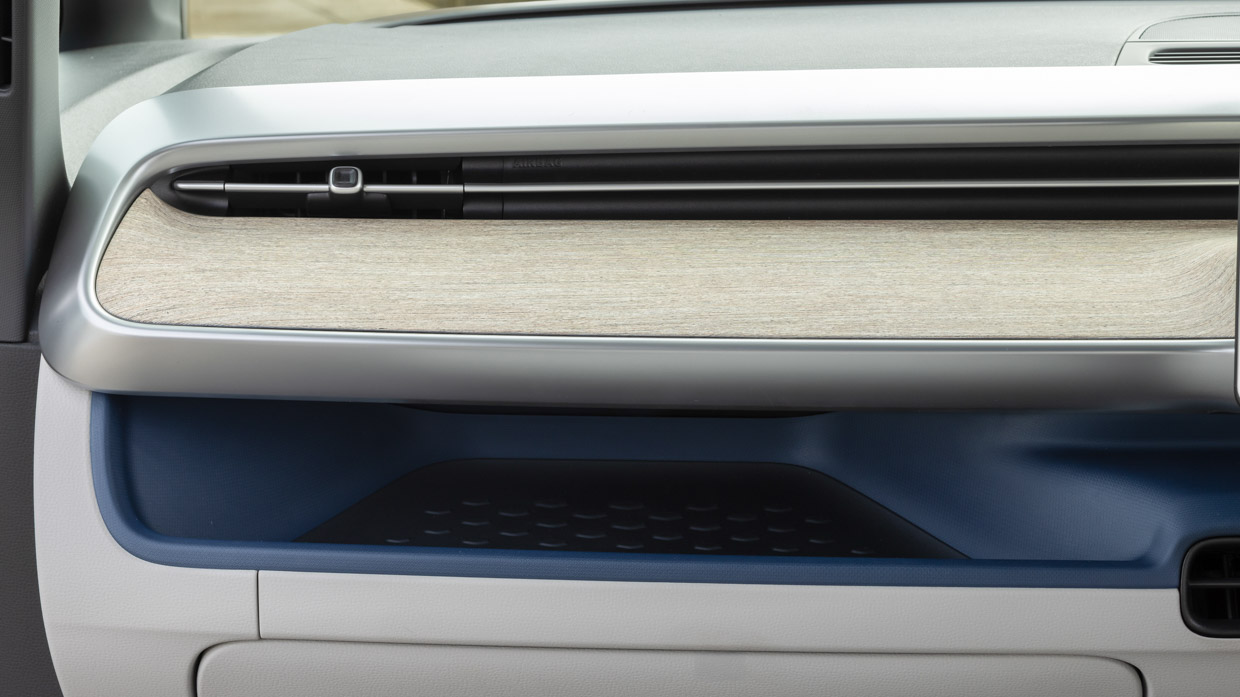
An optional Interior Style Package ($3790) adds 30-colour ambient lighting, Comfort electric front seats with massage, memory and armrests on both sides, pneumatic lumbar support, heated steering wheel, tufted velour floor coverings, and two-tone interior colouring in green/ivory or blue/ivory with Seaqual recycled seat fabric.
The Premium Interior Style Package ($4290) swaps out the Seaqual upholstery for soft-feeling, natural-coloured ArtVelours Eco microfleece.
Other extras include a head-up display with 13-speaker Harman Kardon audio ($2200), panoramic sunroof with ‘smart glass’ tinting ($3290), black 21-inch diamond-turned Bromberg alloys ($1900), laminated side-windows and rear privacy glass ($990), row-two outer seat heating ($290), and a carpeted luggage area platform with net partition ($1300).
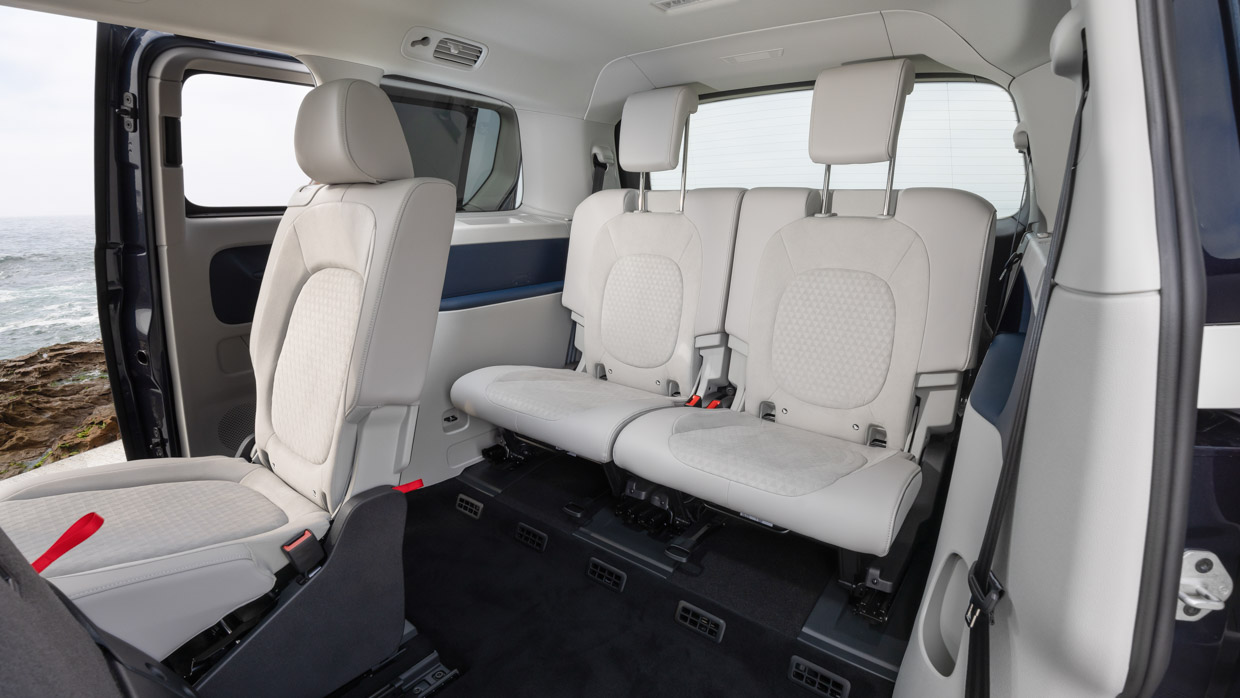
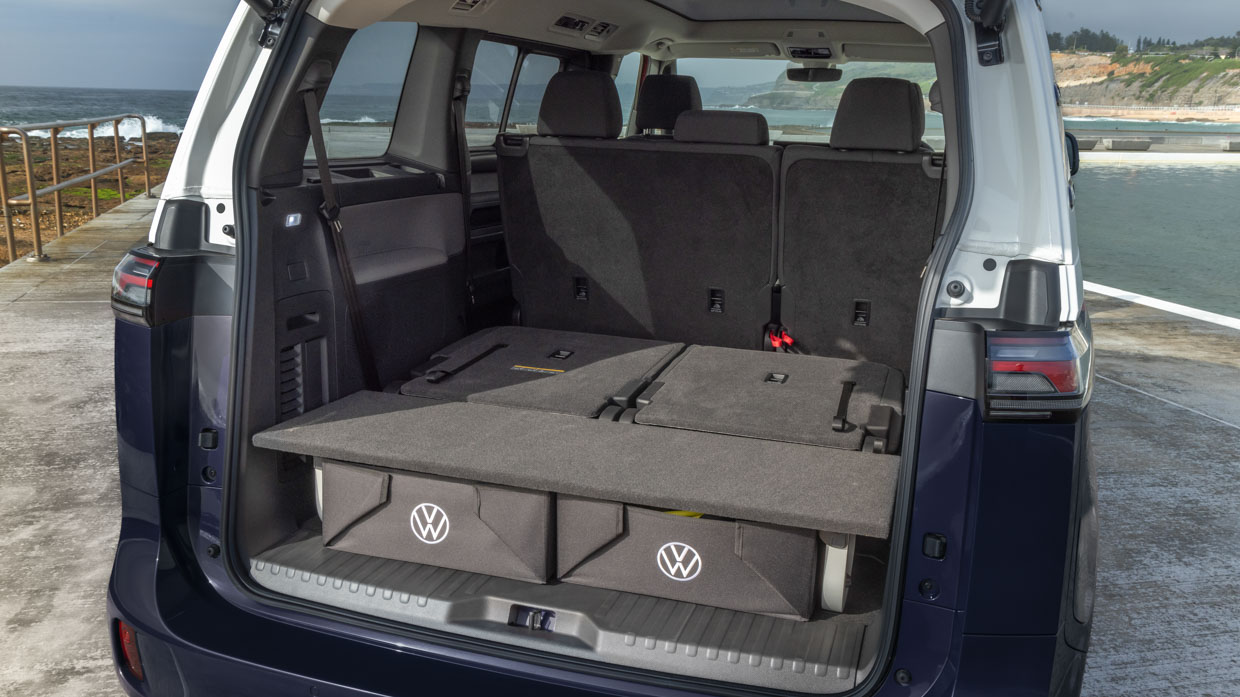
The second-row split bench is mounted on runners to slide fore-aft, yet even in its middle position, legroom is massive. Seat comfort is also impressive in all three positions and the seat-fold mechanism to access the third row (tilting the cushion and tipping the backrest well forward) provides unimpeded entry.
Even the third row is hugely roomy and comfortable for adults – making the ID Buzz Pro LWB an outstanding seven-seater. Expanding its SUV-beating properties is the luggage area. With all three rows in place there’s a claimed 306 litres in the LWB, though stack it high and there seems to be plenty more.
A better indicator of the boot volume is the quoted number for the SWB behind its second row – a massive 1121 litres. Make no mistake, when it comes to packaging flexibility and practicality, the ID Buzz is brilliant.
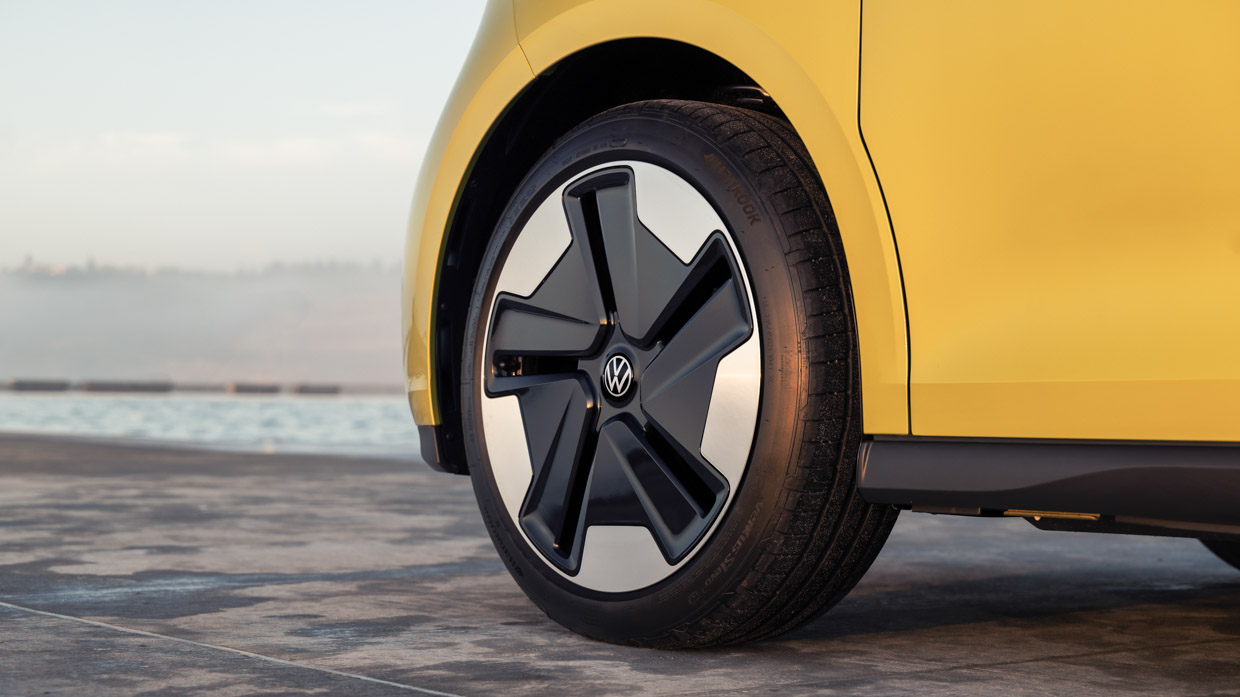
Where the Buzz’s sparkle starts to dim somewhat is on typical Australian country roads. Of the two people-mover variants, the most comfortable is the LWB version wearing ‘Tilberg’ 19-inch alloys with 235/55R19 front tyres and 255/50R19 rears.
It still doesn’t ride with plushness but there’s an acceptable amount of absorbency and a more serene tone to the way it devours poor surfaces.
The SWB wearing exceedingly handsome (optional) 21-inch alloys, however, trades that capability for style. Body control is disciplined, and its suspension doesn’t crash through, yet there’s a reactivity to the way it rides. It deflects off bumps, tossing its occupants around, and there’s an agitation to its ride that may also transmit that same quality to sensitive stomachs.
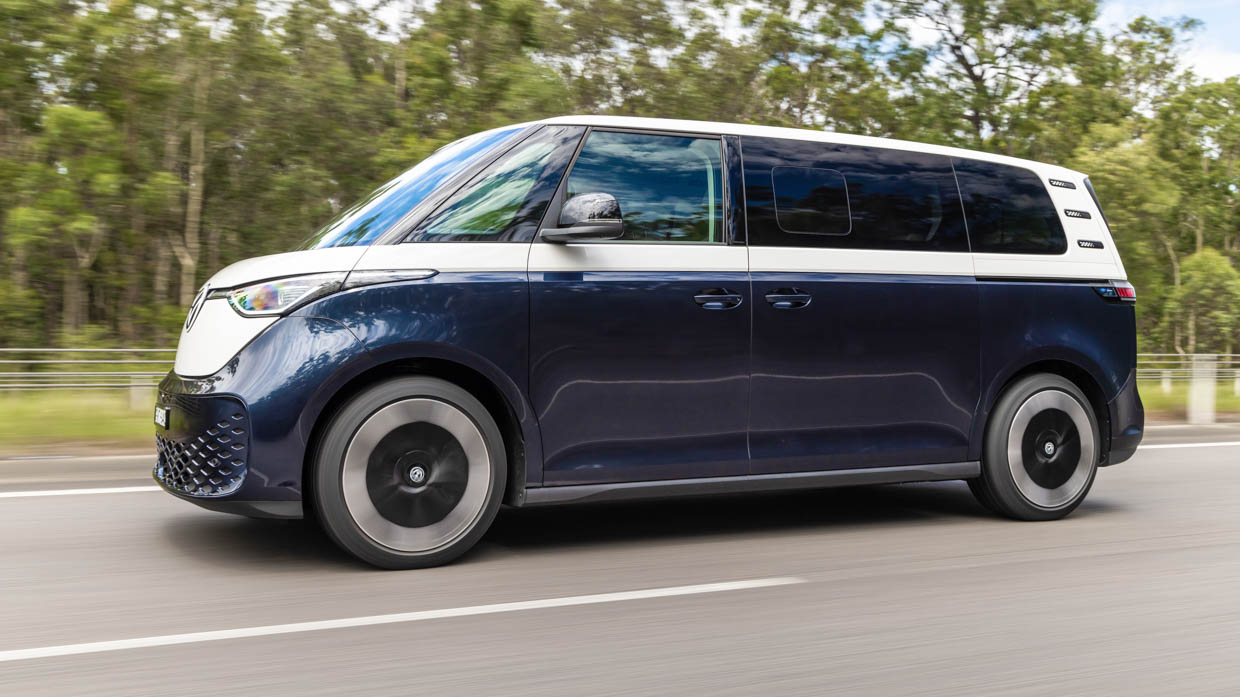
It also doesn’t steer as fluidly as it should – the 235/45R21 front tyres biting keenly when turned into a corner (combined with 265/40R21 rears), but this sharpness exacerbates the electric steering’s numbness at straight ahead.
In Buzz variants with much higher-profile tyres, the transition feels progressive and natural but not in the SWB on 21s. My suggestion would be to pester a Volkswagen dealer to fit the unadorned 18-inch steel wheels and tyres from the Cargo van with delete-option grey bumpers. Unfortunately, these are not factory options.
All that aside, the rear-drive SWB Buzz does corner neutrally and confidently, never feeling as tall or as long as it is. And while the LWB may dial off some of that keenness thanks to its enormous wheelbase length, it’s a better compromise as a dynamic all-rounder – and more practical too.
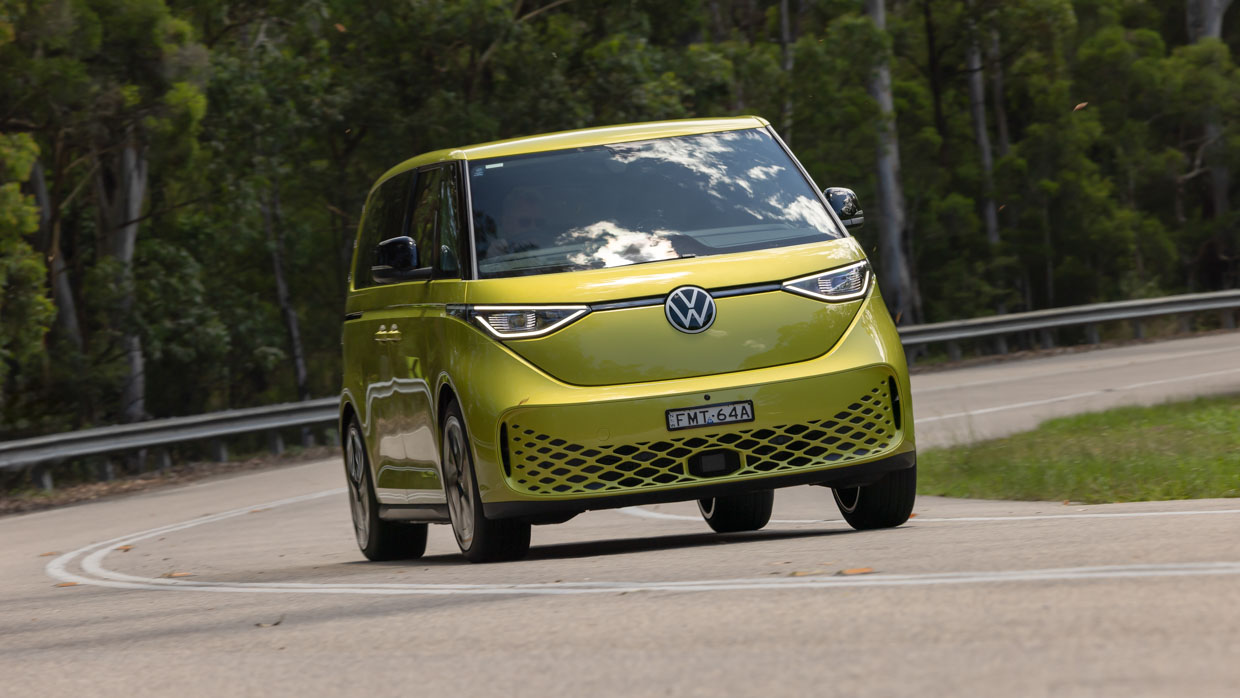
Despite the ID Buzz’s lumpy responses to lumpy Australian roads, it remains impressively quiet and refined – apart from considerable wind buffeting when the driver lowers a window – and blends this sophistication with superb vision and an excellent powertrain.
The regenerative braking is a one-setting-fits-all type, accessed via twisting the gear selector knob to B, yet it works smoothly and assertively, diminishing any need for multiple options.
One of the test cars suffered from very wooden-feeling brakes – as if the power assistance wasn’t turned up high enough – though these were all very low-mileage vehicles, fresh off the boat. And yet it has taken quite some time for the ID Buzz to make it here, given that it began production in Europe way back in June 2022, built in VW’s Hanover factory in Germany.
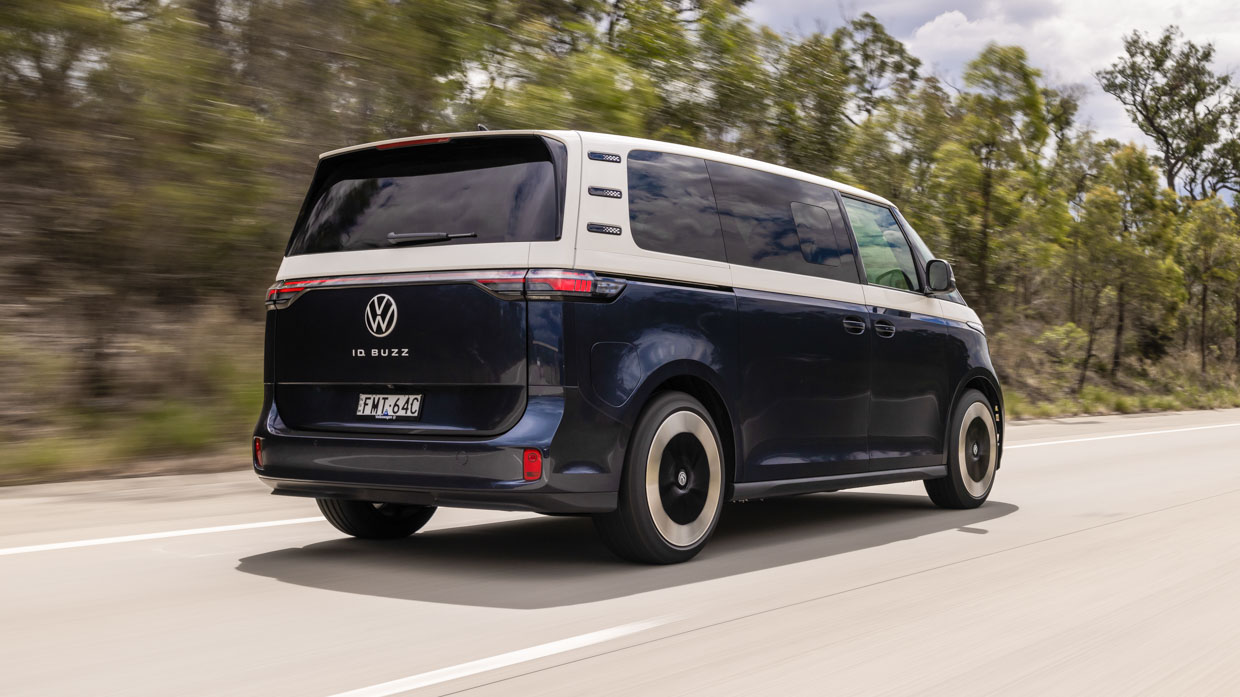
In terms of its standard equipment, active-safety features and its stellar performance in Euro NCAP testing, the ID Buzz remains bang up to date.
About the only area where it seems dated is its lack of wireless Apple CarPlay/Android Auto connectivity, though it’s understood this will be rectified in an update coming in February 2025. We hope Volkswagen also finesses the Buzz’s suspension tune because a car that looks this stunning with $4K worth of two-tone paint and rock-star optional 21s deserves to drive as brilliantly as it looks.
The ID Buzz isn’t a cheap car, and that applies to every market in the world, yet if you view the LWB Pro as the only electric seven-seater below the LCT threshold, then there’s a degree of value here, if $91,290 before on-road costs doesn’t make you choke on your currywurst.
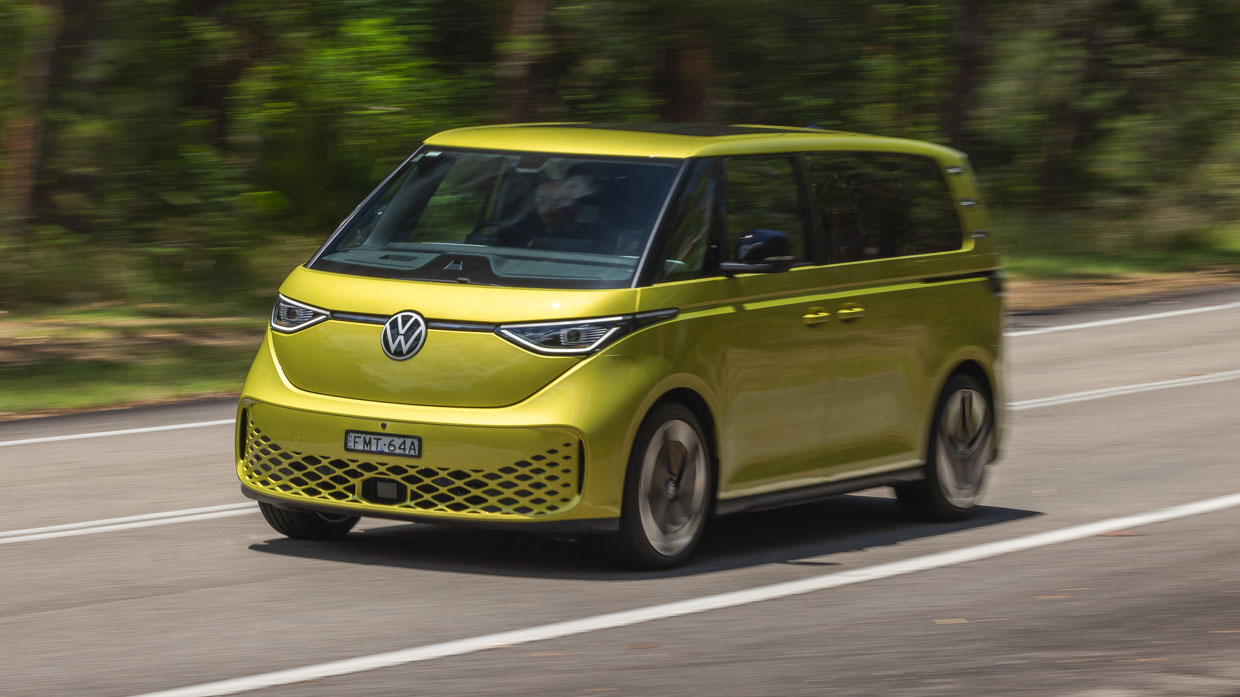
The Buzz’s Australian pricing is actually sharper than many people expected, and Volkswagen is at pains to point out that owning one via a novated lease makes it competitive with much cheaper combustion-engined cars. Its servicing is also something of a bargain at just $1450 for six years/90,000km of motoring.
But there’s an X-factor about the ID Buzz that’s hard to put any kind of price on. If the reaction to it in beautifully beachy Newcastle is anything to go by, this is not a car for shrinking violets. It attracts attention wherever you go – all of it hugely positive. People seem magnetically drawn to it, especially in two-tone paintwork.
Thing is, the ID Buzz doesn’t need to rely just on its looks. In so many areas, it’s superb. Its vision, practicality and ease of use make it a pleasure to enter each day. And while the ride of one particular variant isn’t good, there are other alternatives.
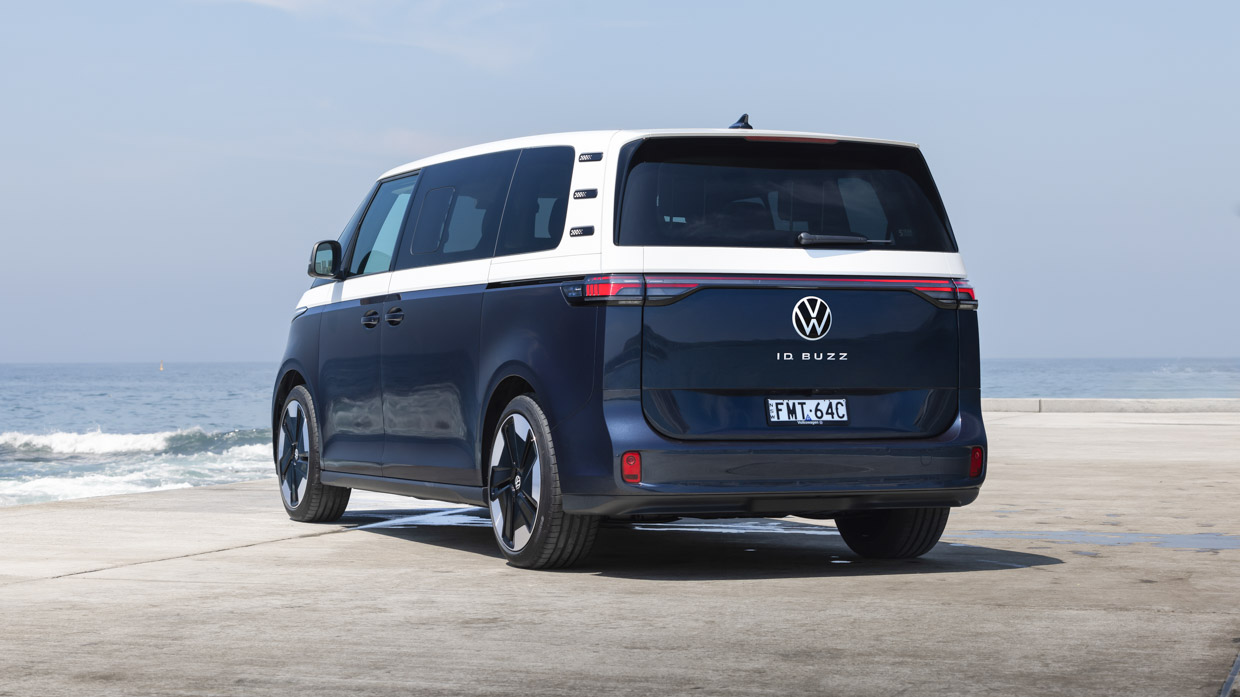
It’s just nice to see Volkswagen finally having a bit of fun, without forgetting what truly makes a vehicle work.
In that respect, the ID Buzz is the polar opposite of the appalling New Beetle. And may it only get better from here.
Key specs (as tested)
About Chasing cars
Chasing Cars reviews are 100% independent.
Because we are powered by Budget Direct Insurance, we don’t receive advertising or sales revenue from car manufacturers.
We’re truly independent – giving you Australia’s best car reviews.
The estimate provided does not take into account your personal circumstances but is intended to give a general indication of the cost of insurance, in order to obtain a complete quote, please visit www.budgetdirect.com.au. Estimate includes 15%^ online discount.
^Conditions Apply
Budget Direct Insurance arranged by Auto & General Services Pty Ltd ACN 003 617 909(AGS) AFSL 241 411, for and on behalf of the insurer, Auto & General Insurance Company Limited(ABN 42 111 586 353, AFSL 285 571).Because we don’t know your financial needs, we can’t advise you if this insurance will suit you. You should consider your needs and the Product Disclosure Statement before making a decision to buy insurance. Terms and conditions apply.
Indicative quote based on assumptions including postcode , 40 year old male with no offences, licence suspensions or claims in the last 5 years, a NCD Rating 1 and no younger drivers listed. White car, driven up to 10,000kms a year, unfinanced, with no modifications, factory options and/or non-standard accessories, private use only and garaged at night.
^Online Discounts Terms & Conditions
1. Discounts apply to the premium paid for a new Budget Direct Gold Comprehensive Car Insurance, Third Party Property Only or Third Party Property, Fire & Theft Insurance policy initiated online on or after 29 March 2017. Discounts do not apply to optional Roadside Assistance.
2. Discounts do not apply to any renewal offer of insurance.
3. Discounts only apply to the insurance portion of the premium. Discounts are applied before government charges, taxes, levies and fees, including instalment processing fees (as applicable). The full extent of discounts may therefore be impacted.
4. We reserve the right to change the offer without notice.